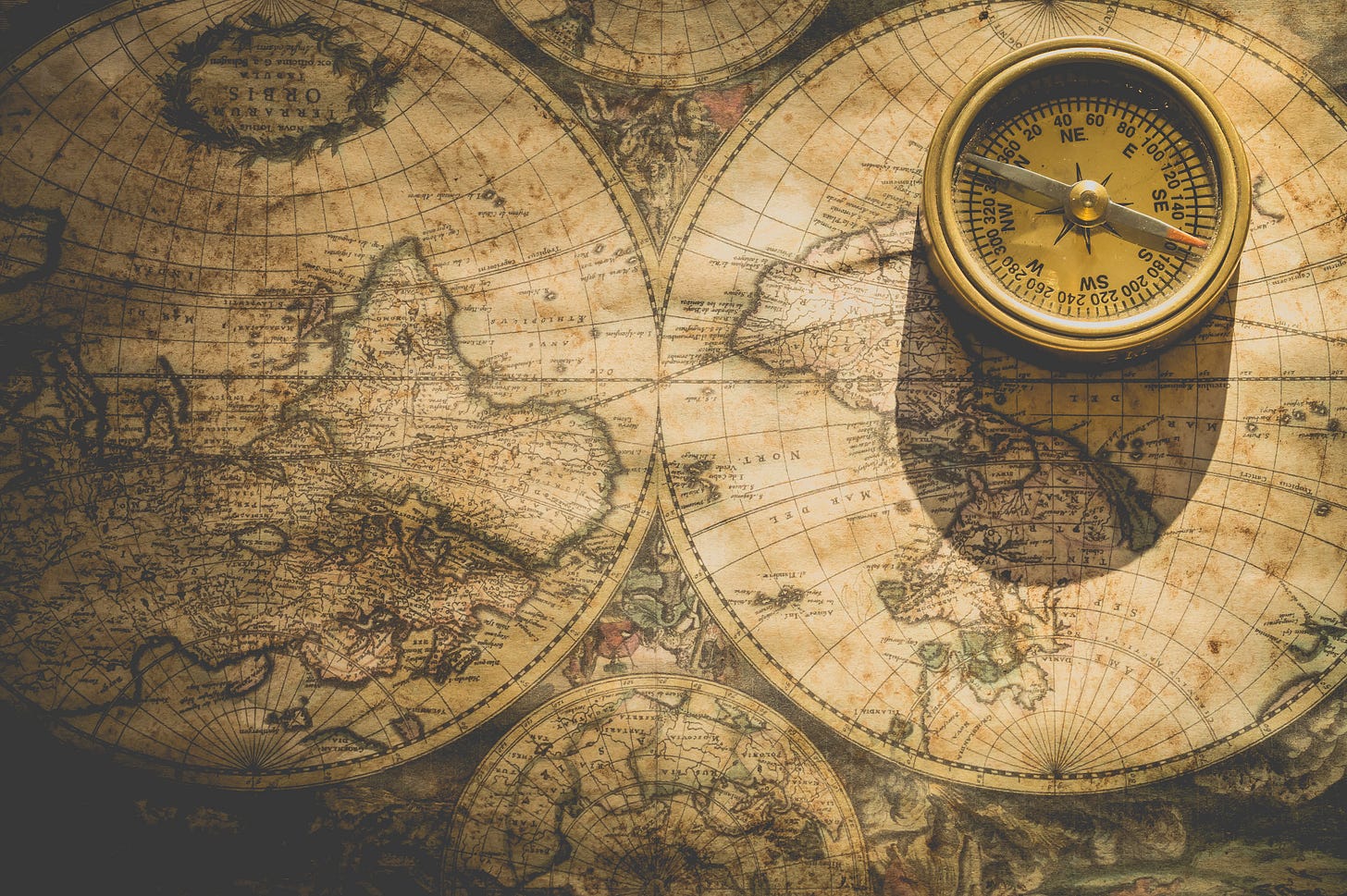
“Maps encourage boldness. They’re like cryptic love letters. They make anything seem possible.” ― Mark Jenkins
A picture is worth a thousand words—we have all heard this saying and a map is no different. I am a firm believer when you are creating an alternative world or setting your novel in a place not contemporary, you should draw a map. Even contemporary places sometimes utilise a map, like a floor plan for a murder mystery.
A map helps to paint a picture in the minds of your audience. We create a world so we can thrust our characters into adventures, we create a map so we can visualise their journey. Maps bring our stories to life, giving them a sense of existence and physicality off the page.
I’ve always loved the map at the front of a book, since it instantly throws us into the story. If you draw a map, readers can track the hero’s journey over the lands of your fantasy world, giving them the extra garnish to visualise your world a little more beyond the text.
Think of the classic examples where fantasy maps teleported us right into the heart of the action. The Godfather of Fantasy, J.R.R. Tolkien created his map of Middle Earth, George RR Martin brought us the treacherous world of Westeros—the list goes on. To the more recently created worlds of Tomi Adeyemi’s mythical African kingdom of Orïsha, some maps take us beyond one singular world. Many of the Star Wars Expanded Universe books (now known as Legacy) included a map taking us to a ‘galaxy, far, far away…’
It stands as not only a service to your readers but also as a service to yourself. A map envisions the workings and complexities of the world which up until this point existed in your mind or in words (depending on what stage you are in). For you, it serves as a template or stepping stone to create and develop your story's plot, history, geography and culture.
You do not need to be a Monet, Van Gogh or Banksy to draw a map, it can be as beautiful or as hideous as you want but it must give a sense of the vastness, intricacies and the hidden of the world you are trying to create. Imagine the jagged terrain of the Crimson Mountains, the oceanic depths of the Blossom Sea, the abandoned city of Gorgons or the eerie isolation of the Five Acre settlements. I made up all these features but turning these illustrative words into a single image that can further teleport the reader to your new world.

I would recommend the following for inspiration:
Pinterest: If you search for fantasy map and use other recommended search words, you will find lots of guidance on how to draw your own fantasy map. There are also plenty of examples for inspiration where you can be transported away to mystical worlds for hours on end.
Twitter: On this platform, there are several map/cartography communities who can definitely inspire you to pull out those colouring pencils. Cartographer’s Guild do brilliant work in showcasing the work of their members. Also many cartographers share their work here.
Instagram: Similarly to Twitter, many cartographers use Instagram to share their maps. I recommend using these hashtags: #fantasymap #fantasymaps #rpgmap #dndmaps #mapmaking #cartographyart #mapmaker to help with your dive into map inspiration.
A vast majority of these maps are detailed and visually astounding consisting of various geographic features such as mountains, valleys, rivers, lakes, forests. From here, you can position your cities, settlements, castles, forts or monuments. From all of these features, stories, history and lore grows. Writing is painting with words; map drawing is writing with pictures.
When creating maps for my own worlds—both real and not real—I found myself getting sucked into the barebones, the foundation of the world I wanted to create and from this, new intricate details about particular
areas of my worlds would take root. Drawing the place where my characters lived allowed me to bring order and harmony to the chaos of my notes during the planning stage. I was able to tackle concepts of how historical eras shaped different cultures and how different regions varied geographically.
Map making is another storytelling tool: taking words, novels or series and imagining them into a singular picture to capture it all, allowing both writer and reader to explore a fantasy world.
What are some of your favourite fantasy maps from literature? Who are your favourite map makers online? Share links? Please also share your tips for map making in the comments section.




This was such an insightful read! There are so many approaches to finding out what works best for yourself. I'll definitely be thinking about this as a starter when world building!